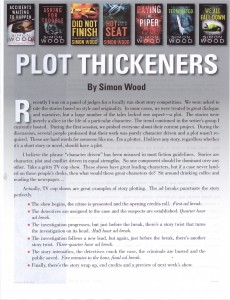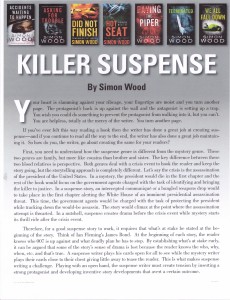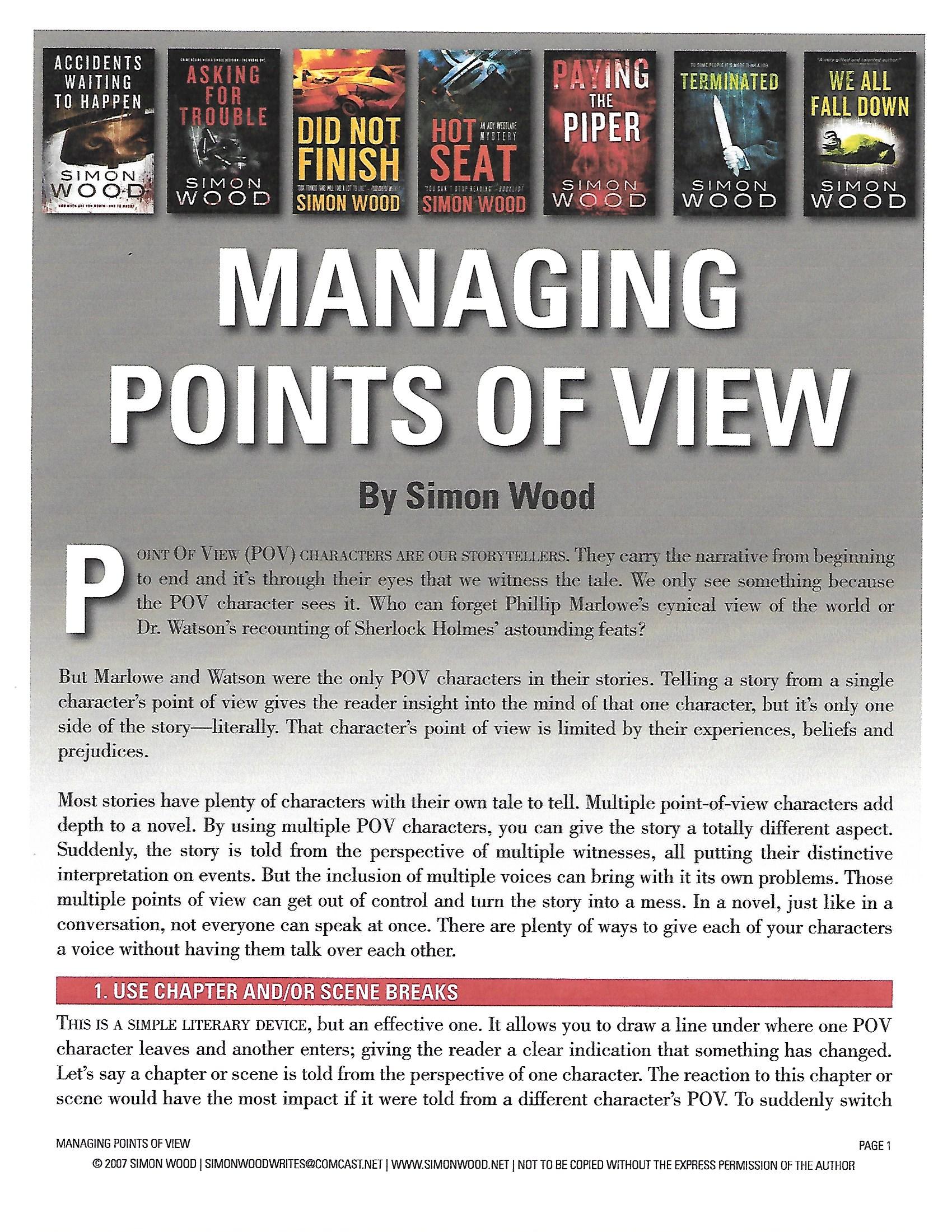Workshops
I’ve written for Writer’s Digest and other magazines on numerous topics over the years and this has led me to present a number of workshops around the country. I’ve developed a number of online workshops for writers to take.
Click the course title for class details and to sign up.
PLOT THICKENERS: Next Class: March 4th, 2024 Workshop length: 3 weeks. Fee $95.00 Plotting out your novel before you begin is a great exercise. Your story is thought through with no bad logic or unnecessary scenes. This process doesn’t have to be some drawn out and creativity killing affair. I’ll teach you some fast & effective techniques for plotting a novel from beginning to end. Don’t run out of ideas or pad out your novel again. The presentation includes my famous color-coded plotting spreadsheet. Plotting shouldn’t be viewed as a passion killer that destroys any chance of spontaneity and creativity. Plotting is a very creative process. You’re creating the whole story in short form, providing a skeleton framework that will have the flesh put on during the writing. What can be more motivating than when you have a complete outline for your novel to guide you from “once upon a time…” to “…and they lived happily ever after”? And what can be more demotivating than coming to a grinding halt on a manuscript 30,000 words shy of your target with nothing left to say? There’s a lot to be said for plotting and why it is a great help to the writing process. With this workshop, students will develop the skills for producing well thought out plotlines and use my outlining style sheet for creating simple “at a glance” outlines. Lesson Plan: KILLER SUSPENSE: Next Class: May 6th, 2024 Workshop length: 2 weeks. Fee: $65.00 You’re reading. Your heart is slamming against your ribcage, your fingertips are moist and you turn another page. The protagonist’s back is up against the wall and the antagonist is setting up a trap. You wish you could do something to prevent the protagonist from walking into it, but you can’t. You are helpless, totally at the mercy of the writer. You turn another page. If you’ve ever felt this way while reading a book, then the writer has done a great job at creating suspense—and if you continue to read all the way to the end, the writer has also done a great job of maintaining it. So how do you, the writer, go about creating the same for your readers? KILLER SUSPENSE reveals the tricks of the trade for creating top notch suspense in your writing, whether it be a cozy or a spy thriller. The intensity might be different but the techniques are the same. Lesson Plan: SHIFTING POINTS OF VIEW: Next class: June 3rd, 2024 Workshop length: 2 weeks. Fee: $65.00 Can’t decide who’s the best character to tell your story? You don’t have to settle for just a single character’s point of view. I’ll discuss the techniques and the decisions that have to be made when writing in multiple points of view. Weaving multiple viewpoint characters in and out of a story is like standing trial and knowing what the judge, the prosecuting attorney and all 12 members of the jury are thinking. Each person is witnessing the same information, but each individual interpretation is different. But it’s not like you can crack into everyone’s mind simultaneously. Even if you could, it’d be impossible to comprehend what 14 people are saying if they’re all talking at the same time. Allowing multiple characters to tell your story can add depth and insight that a single point of view may not be able to convey. Most stories have plenty of characters with their own tales to tell. Multiple POV characters add depth to a novel. Suddenly the story is being told from the perspective of multiple witnesses, all putting their distinctive interpretations on events. But the inclusion of multiple voices can bring with it its own problems. Those multiple points of view can get out of control and turn the story into a mess. In a novel, just like in a conversation, not everyone can speak at once. There are plenty of ways to give each character a voice without having them talk over one another. Even if you’re only writing from a single point-of-view or utilizing an omniscient POV approach, going through these exercises will help ensure there’s a smooth transition between characters. Lesson Plan: SHORT STORIES: Next Class: July 1st, 2024 Workshop length: 2 weeks. Fee: $65.00 A short story is storytelling in its purest sense. It’s concentrated expression. So writing a short story is tough, but it’s no tougher than any other writing discipline. This course covers some of these key areas: QUERY LETTERS & SYNOPSIS WRITING: Next Class: August 5th, 2024 Workshop length: 2 weeks. Fee: $65.00 If you thought writing your book was tough, coming up with an eye-catching query letter and an attention-grabbing synopsis is the hardest. There’s no dodging the exercise as it’s important is vitally important in ensnaring an agent and/or editor. Distilling your novel into a few short paragraphs is skill and talent that serves every writer well. This course covers some of these key areas: AUTHOR PROFESSIONALISM: Next Class: September 2nd, 2024 Workshop length: 2 weeks. Fee: $65.00 Being an author isn’t a solo profession. You will encounter publishers, editors, agents, readers, librarians and other writers. What you say and do can lead to fruitful relationships or kill them stone dead. You can also find yourself in unprofessional situations that require smart handling to extract yourself from. By knowing and understanding your industry, you’ll be a sharper and savvier writer, which will open doors for you. Professionalism isn’t something to take lightly. Forearmed is forewarned. Think about your professional conduct as much as you do about your craft, because it matters just as much for a long and successful career. Remember: Writing is a profession as well as a craft. That means as a writer, you need to act like a professional like you would in any other profession. Lesson Plan: The format for the workshops is as follows: PLOT THICKENERS
PLOT THICKENERS
 KILLER SUSPENSE
KILLER SUSPENSE
 SHIFTING POINTS OF VIEW
SHIFTING POINTS OF VIEW
SHORT STORIES
QUERY LETTERS & SYNOPSIS WRITING
AUTHOR PROFESSIONALISM

